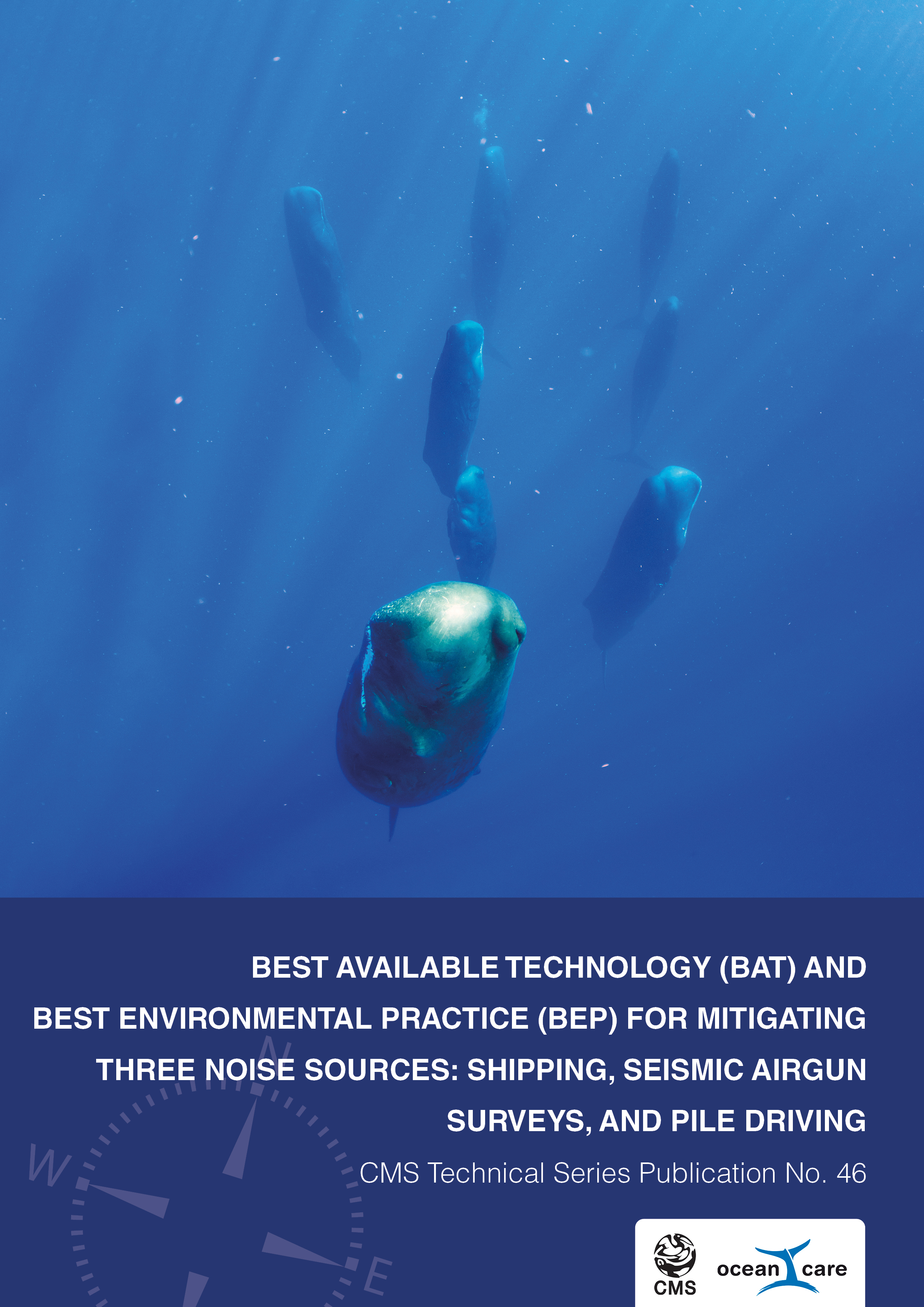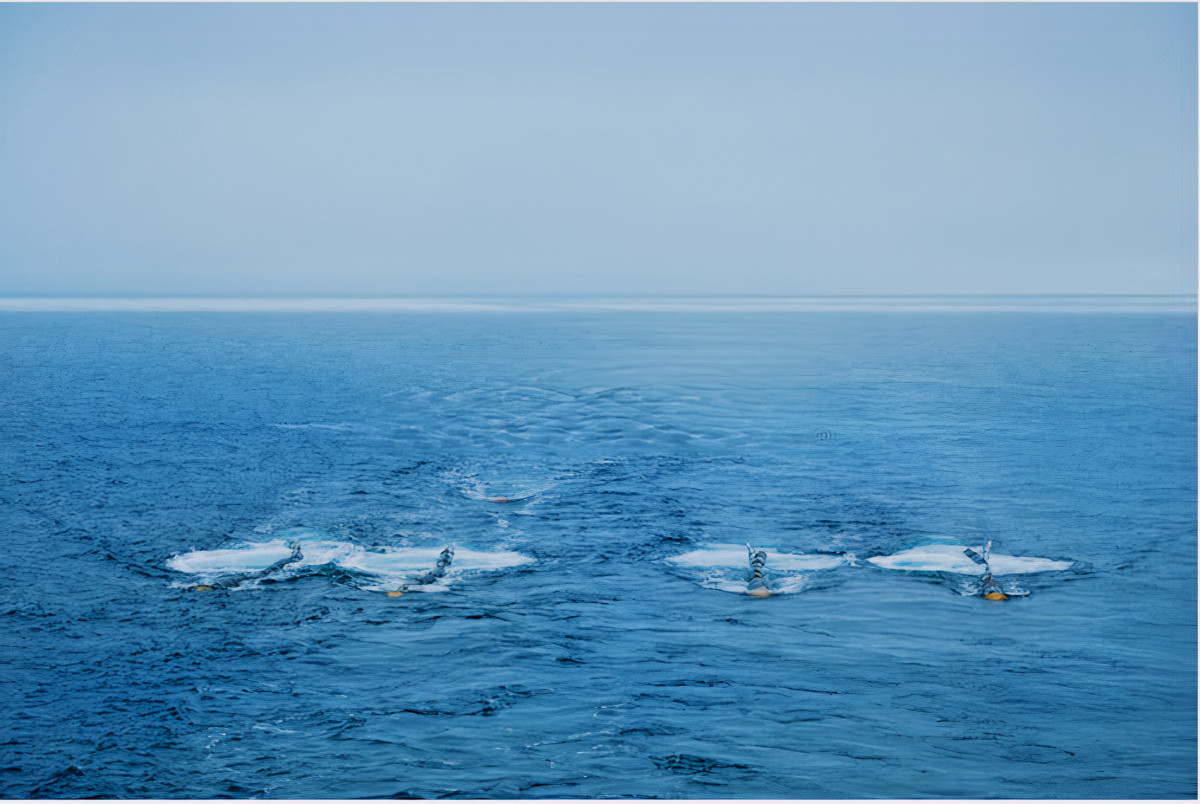Anthropogenic marine noise has long been recognized as a major threat to many marine species. Levels of anthropogenic marine noise have doubled in some areas of the world, every decade, since the 1960s. Commercial shipping, seismic exploration, sonar technologies and industrial activities collectively raise the ambient noise in the ocean. When considered in addition to the number of other anthropogenic threats in the marine environment, this increase in noise levels can become a life-threatening issue for many marine species. Some impulsive sounds are so loud that they can directly kill marine life.

TECHNICAL SERIES REPORT
Best Available Technology (BAT) and Best Environmental Practice (BEP) for Mitigating Three Noise Sources: Shipping, Seismic Airgun Surveys, and Pile Driving
Noise Sources
The sources of anthropogenic noise are diverse and include military and civil high-powered sonar, shipping and vessel traffic, geophysical surveys, aggregate extraction, construction works, offshore platforms, playback and sound exposure experiments, pingers, acoustic data transmission, and wind, tidal and wave turbines. These activities are usually divided into ‘non-impulsive’ (or continuous) noise – the constant drone caused for example by shipping or oil and gas installations – and ‘impulsive’ noise – intense short pulses of sometimes very loud sound, repeated over a period of time.
Effects on Marine Wildlife

Marine wildlife – including both migratory species and their prey – rely on sound for vital life functions, including communication, prey and predator detection, orientation and for sensing surroundings. While the ocean is certainly a sound-filled environment and many natural sounds are very loud, wildlife is not adapted to anthropogenic noise. Animals exposed to elevated or prolonged anthropogenic noise can suffer direct injury and temporary or permanent auditory threshold shifts, compromising the animal’s communication and ability to detect threats and find food. It can also be directly lethal. Animals can be displaced from important habitats. Finally, anthropogenic noise can mask important natural sounds, such as the call of a mate, and the sound made by prey or a predator.
These impacts are experienced by a wide range of species including cetaceans (whales, dolphins, and porpoises) – the most studied group of marine species when considering the impact of marine noise, but also the polar bear, sirenians (the dugong and manatees), pinnipeds (seals, sea lions and walrus), marine turtles, marine otters, and even fish, crustaceans and cephalopods are affected.
For more information, please refer to the Technical Support Information prepared for CMS Parties.
Assessing the Direct and Indirect Impacts on Migratory Species
Given the importance of noise-related impacts to many species listed on the CMS Appendices, as well as their prey species, several resolutions of ASCOBANS, ACCOBAMS and CMS (see below the list of recent resolutions) call for noise-related considerations to be taken into account as early as the planning stages of activities, especially by making effective use of Environmental Impact Assessments (EIA). In this context, CMS has developed CMS Family Guidelines on Environmental Impact Assessment for Marine Noise Generating Activities (Annex 1 to Resolution 12.14) which focuses not only on cetaceans, but also covers other species not included in most national and regional operational guidelines, including prey species.
Technical Advice from a Specialized Working Group
CMS, ASCOBANS and ACCOBAMS benefit jointly from the advice provided by a specialized Working Group. Following from earlier work of ACCOBAMS and ASCOBANS, the Joint Noise Working Group (JNWG) has been expanded to include CMS in 2014. It has been established to support the Parties and scientific and advisory bodies of the three conservation treaties in the implementation of relevant Resolutions to ensure progress is being made towards mitigating the negative impact of underwater noise on cetaceans and other marine biota.
Group members include experts from the fields of science, policy and relevant civil society organizations. The JNWG is co-chaired by Sigrid Lueber (OceanCare) and Yanis Souami (SINAY). For more information, or to flag your interest in joining the working group, please contact Heidrun Frisch-Nwakanma (CMS Secretariat).
Please refer to the Terms of Reference and current Work Plan of the JNWG for details.
Industry Advisory Group (IAG) on Underwater Noise
The JNWG has been instructed by CMS Resolution 12.4 to consult industry experts on the technical feasibility of proposed mitigation measures, as well as on any alternative technologies to minimize anthropogenic noise pollution of the marine environment to the highest extent possible. In this context, a new Industry Advisory Group (IAG) has been set up with experts from relevant industries, such as the shipping sector, oil and gas industry, shoreline developers, offshore extractors, and marine renewable energy companies.
Membership to the group is open and we would welcome wider participation from the industry sector to allow the JNWG to base its advice on the best available scientific and technical information. If your organization is interested in being part of the IAG, please contact the IAG Co-Chairs Ross Compton (EnerGeo Alliance) and Chris Waddington (International Chamber of Shipping).
Please refer to the Terms of Reference and Operational Procedures of the IAG for more details.
Recent Relevant Resolutions:
- CMS Resolution 12.14 Adverse Impacts of Anthropogenic Noise on Cetaceans and Other Migratory Species
- ACCOBAMS Resolution 7.13 Anthropogenic Noise
- ASCOBANS Resolution 8.11 (Rev.MOP9) CMS Family Guidelines on Environmental Impact Assessment for Marine Noise-generating Activities
- Convention on Biological Diversity Decision XIII/10 Addressing impacts of marine debris and anthropogenic underwater noise on marine and coastal biodiversity
CMS Agreements, MOUs and other International Organizations addressing Marine Noise:
- ACCOBAMS: Anthropogenic Noise
- ASCOBANS: Joint Noise Working Group, Underwater Noise
- OSPAR
- CBD Technical Series 99: Review of the Impacts of Anthropogenic Underwater Noise on Marine Biodiversity and Approaches to Manage and Mitigate Them
- IMO
- IWC
- HELCOM
- EU Marine Strategy Framework Directive (European Commission – DG Environment)



